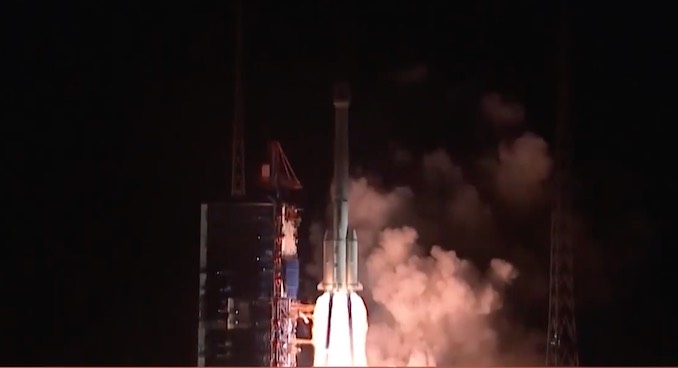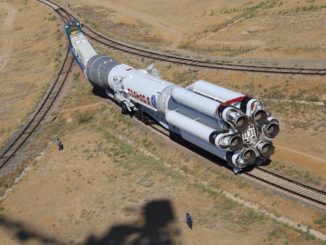
China successfully launched a satellite toward geostationary orbit Thursday aboard a Long March 3B rocket, but the spacecraft’s purpose remained a mystery.
The TJS 4 satellite lifted off from the Xichang space center in southwestern China’s Sichuan province at 1521 GMT (11:21 a.m. EDT; 11:21 p.m. Beijing time) Thursday. A Long March 3B rocket — China’s workhorse launcher for geostationary satellites — carried the TJS 4 spacecraft into space after flying east from the hilly Xichang spaceport.
The three-stage, 184-foot-tall (55-meter) Long March 3B rocket, boosted by four strap-on engines, released the TJS 4 satellite into an elliptical transfer orbit ranging in altitude between 124 miles (200 kilometers) and 22,255 miles (35,817 kilometers), according to U.S. military tracking data.
The spacecraft was tracked in an orbit inclined 27 degrees to the equator.
The China Academy of Launch Vehicle Technology, or CALT, announced the mission was successful.
TJS 4 is likely heading for a position in geostationary orbit more than 22,000 miles (nearly 36,000 kilometers) over the equator. The satellite will use on-board propulsion to circularize its orbit in the coming weeks, and lower its orbital inclination over the equator.
Statements released by CALT, a government-owned rocket manufacturer, and Chinese state media claimed the TJS 4 satellite will test communications technologies in space.
China has launched three previous satellites in the TJS series in 2015, 2017 and 2018. The previously-launched satellites were also described by Chinese media as communications technology demonstration payloads, but independent analysts and satellite trackers believe they were likely built for military missions.
The new TJS 4 spacecraft may have an intelligence-gathering mission collecting information from radio or electronic signals. Jonathan McDowell, an astronomer at the Harvard-Smithsonian Center for Astrophysics who tracks global space activity, tweeted that he supports such a theory.
Some analysts believe the second TJS satellite may be an early warning station designed to detect missile launches.
The TJS 3 satellite launched in December 2018 released a smaller spacecraft after reaching orbit, but China has not acknowledged it, and the satellite’s purpose remains a mystery.
Email the author.
Follow Stephen Clark on Twitter: @StephenClark1.



